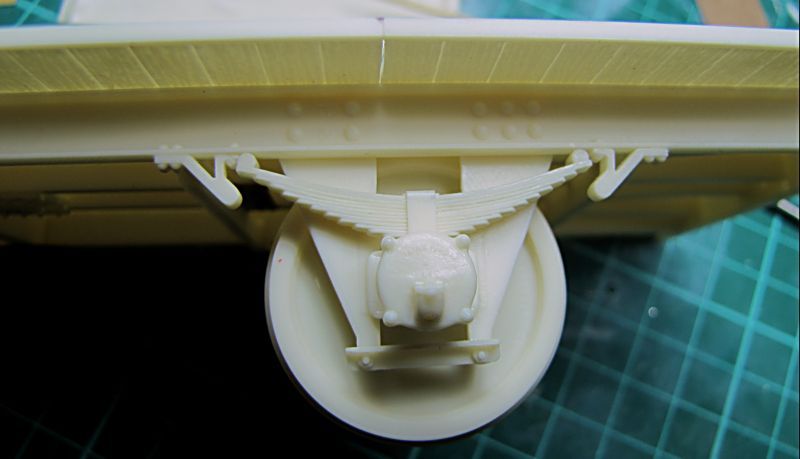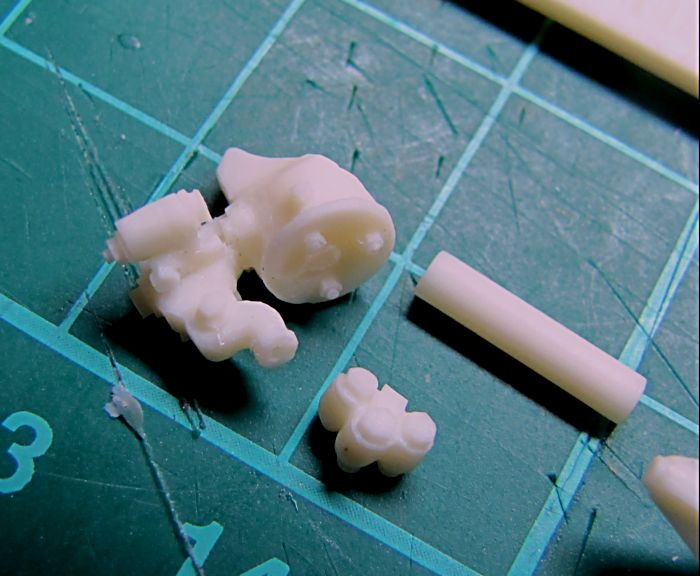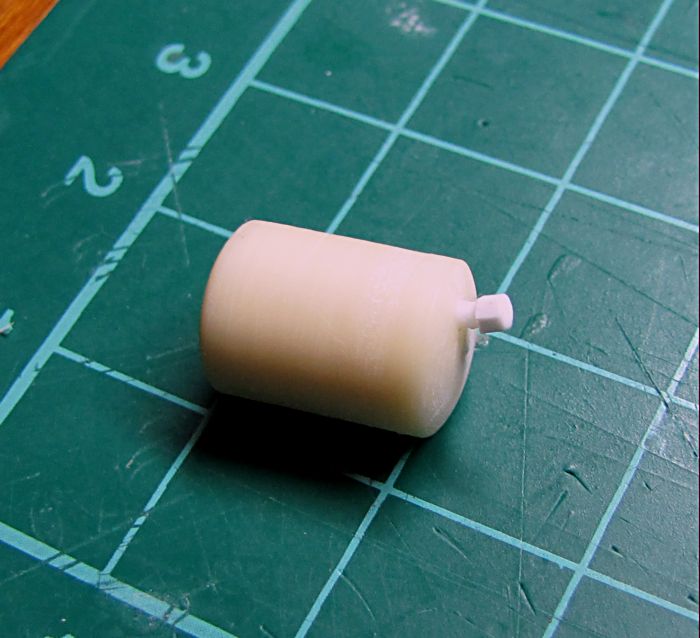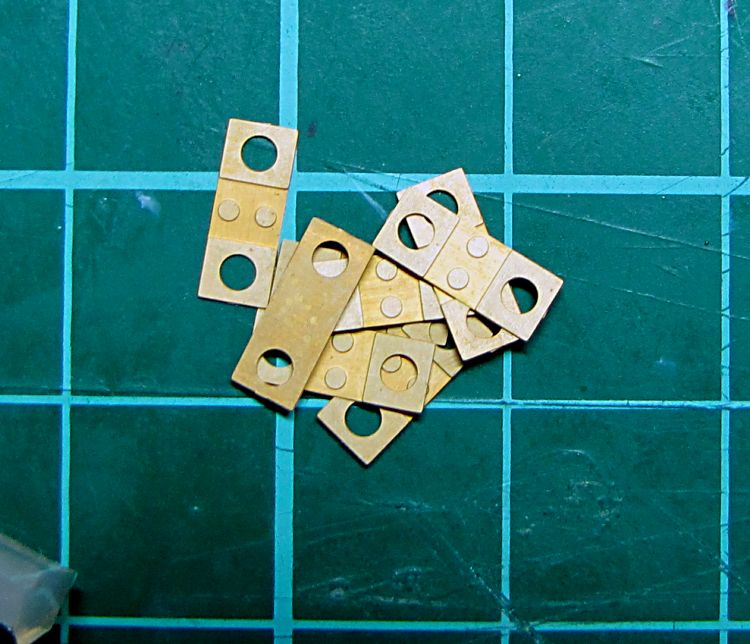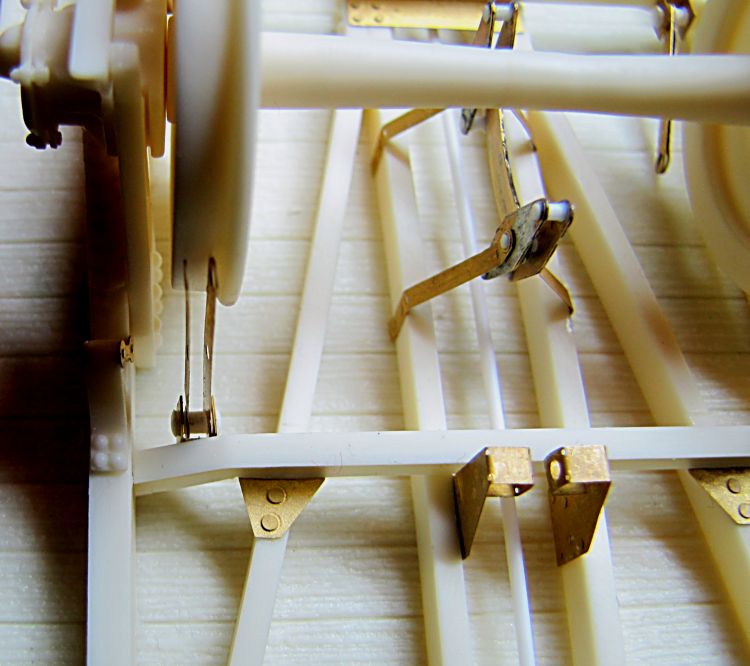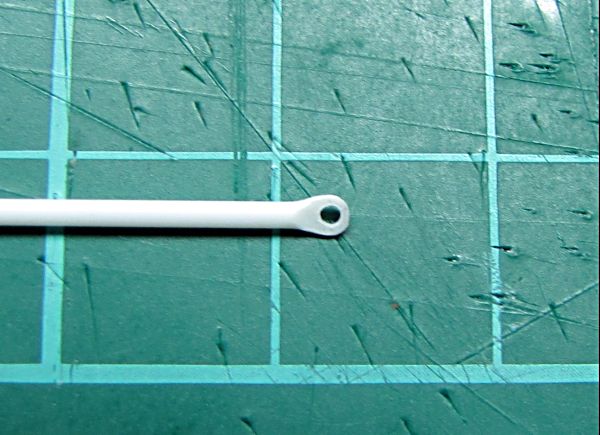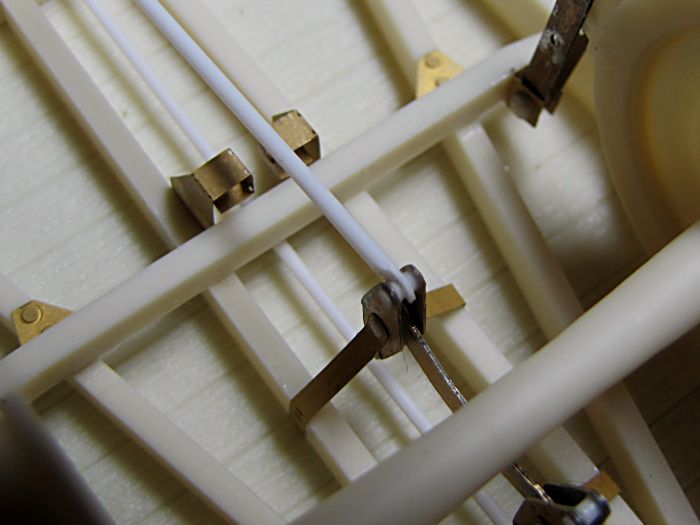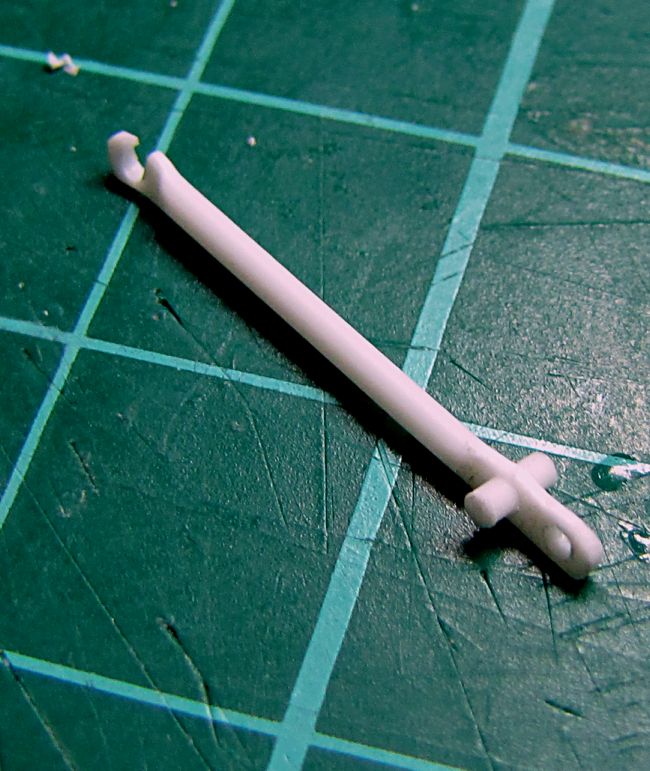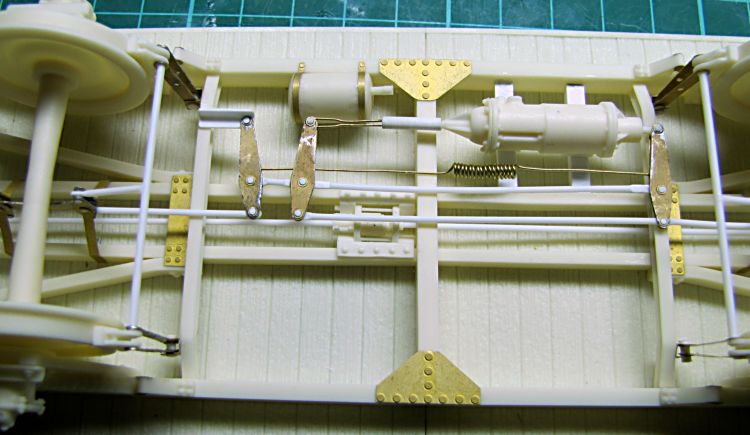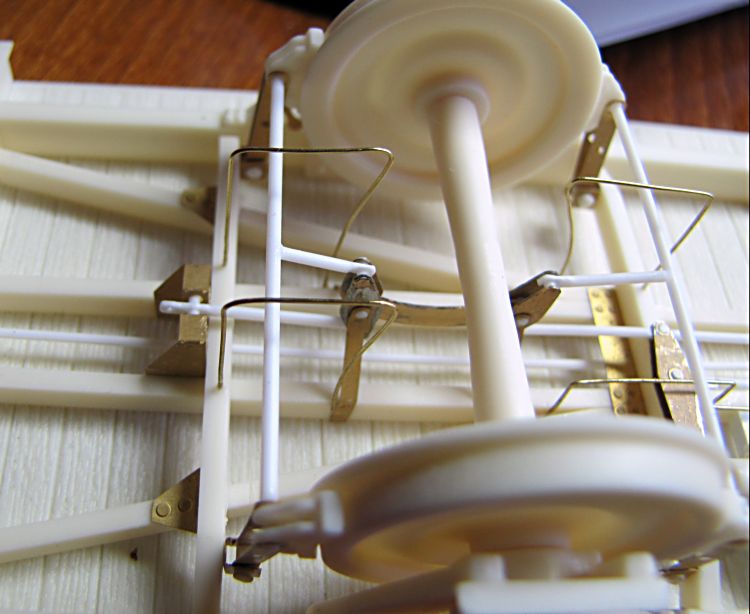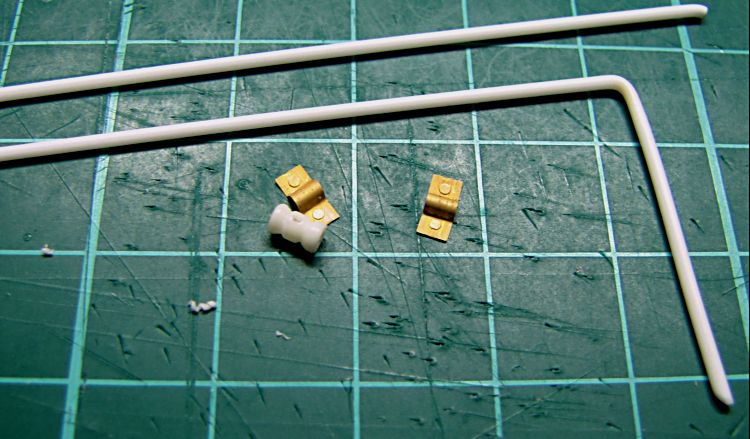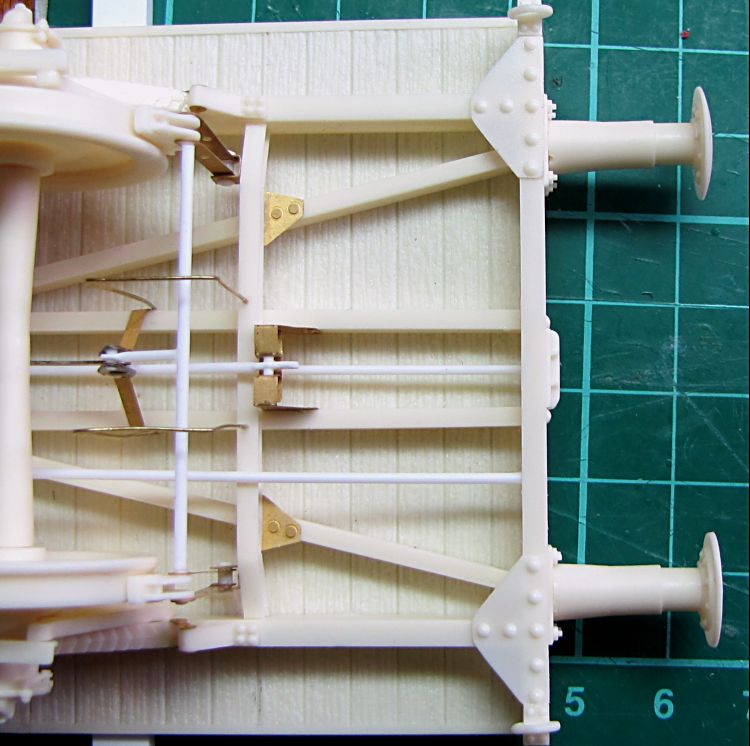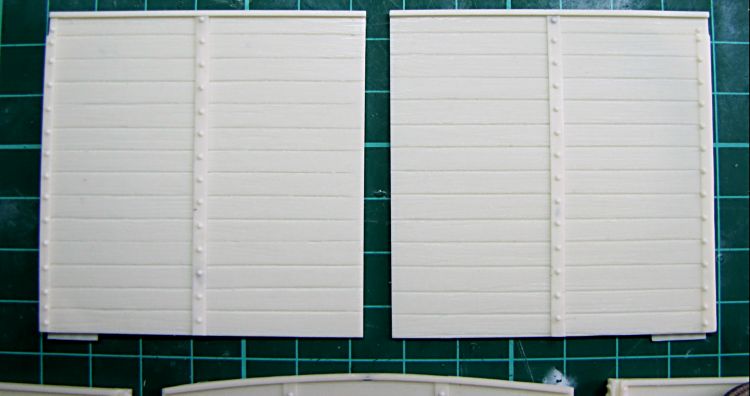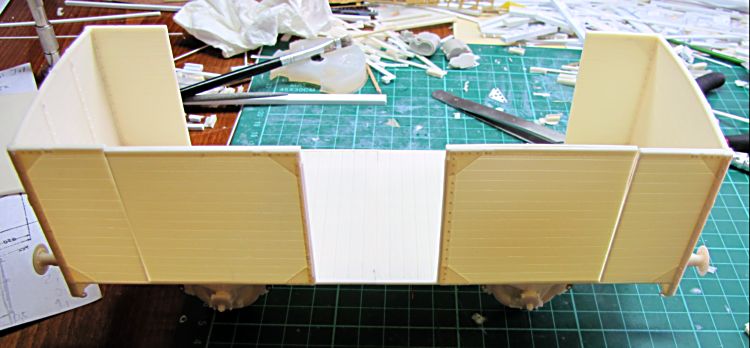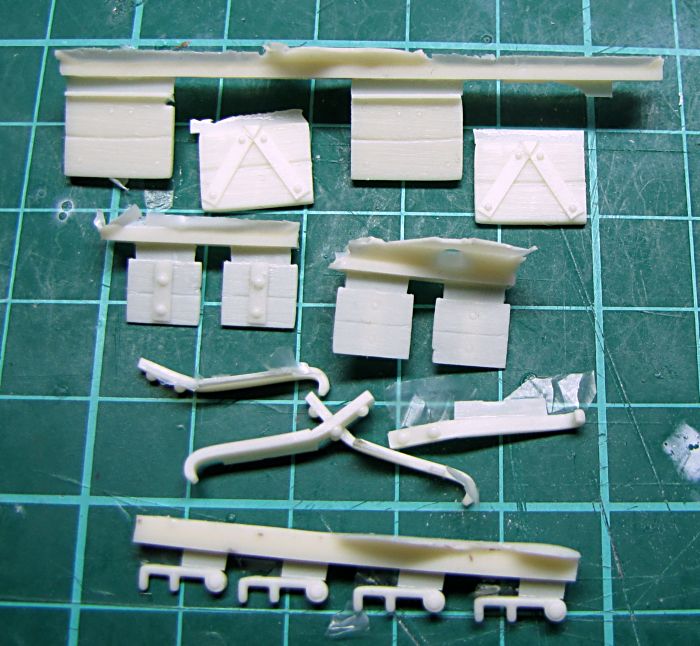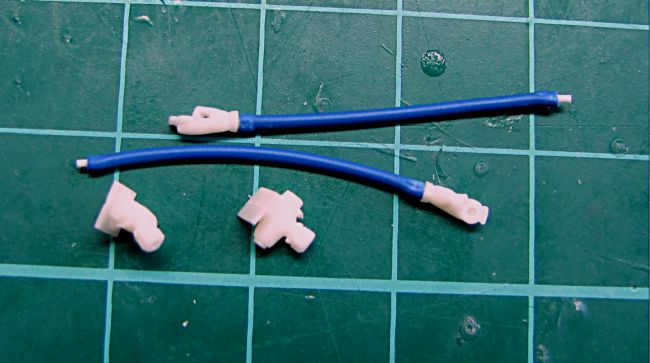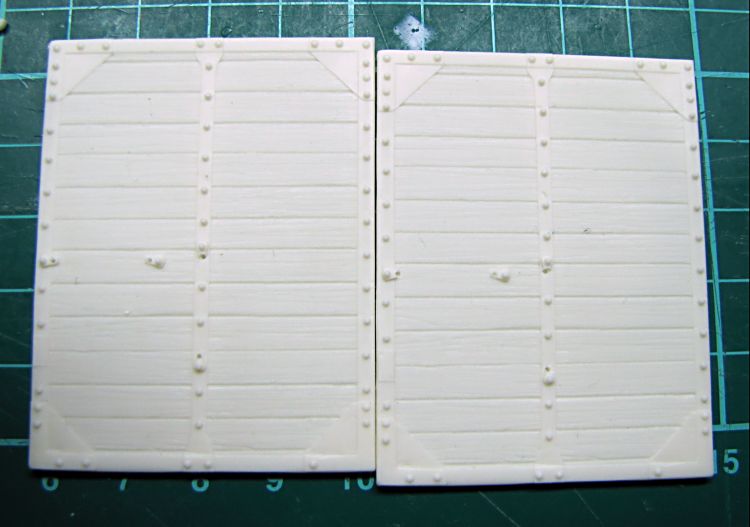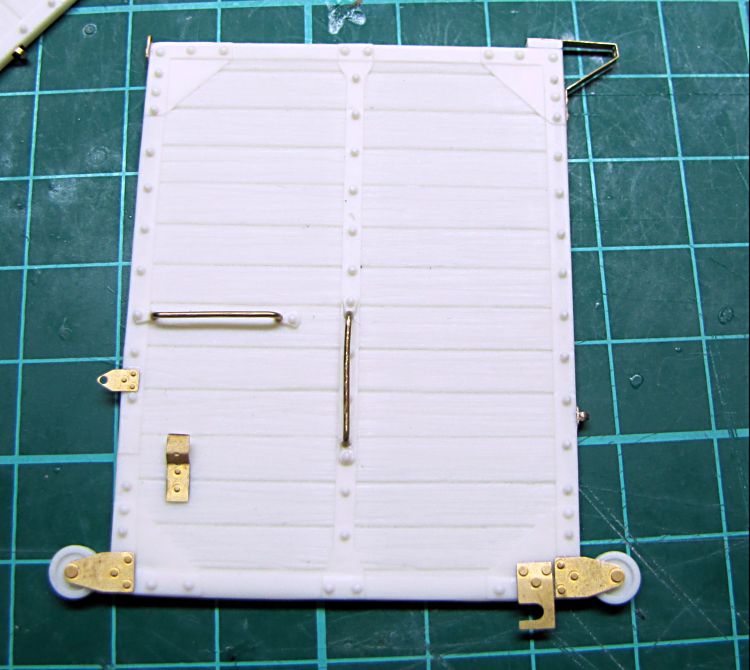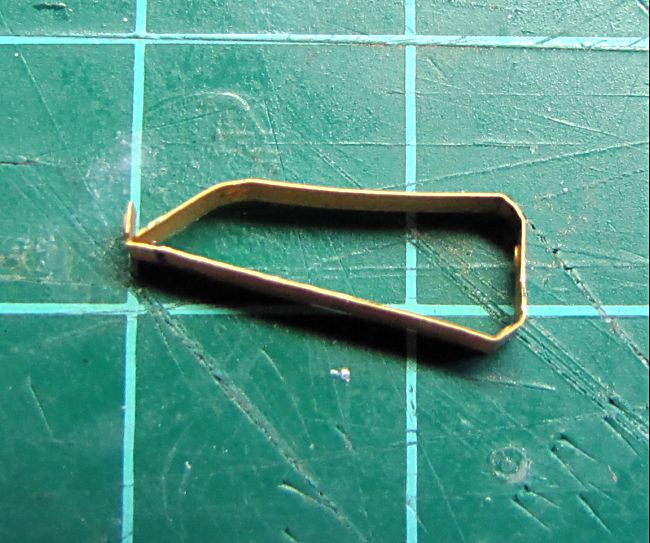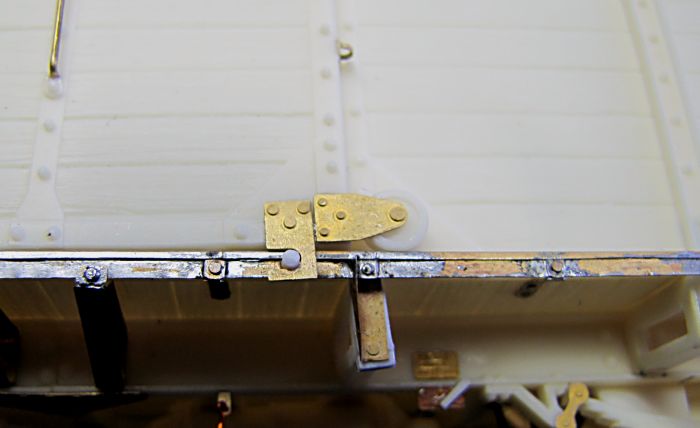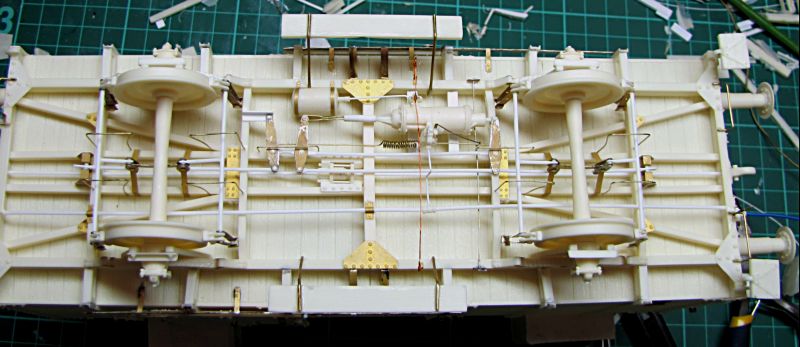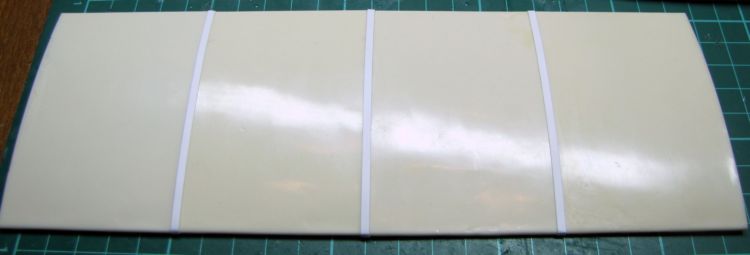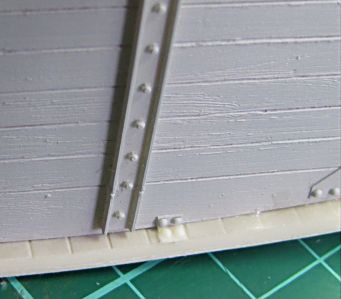This is one of the most known and also infamous German wagons. With some changes of design produced in thousands pieces since 19th century, earlier with brake cab mounted up at roof level, later without it, these wagons were used widely in German rail service to transport goods and often animals as well. During the WWII they became an important part of any military train heading the battlefield, filled with supplies or soldiers, and they were also used to transport all enemies of the nation to concentration camps. Here is one of these wagons, they could vary in small details, depending on manufacturer and year of production. This one shown in German museum has marking of a car captured and used by Allies at the end of the WWII.

Frame assembly
This job is easy, once again it is very important to keep eye on right angle in any corner, also perfectly flat working surface is a need. Just small cleaning where connectors to feeders were placed - these sides will be turned to the floor anyway. I completed frame beams, dry-fitted in assembly slots first, because frame construction needs exactly the same length like floor sections glued together - these are different ones for outside and inside, both by two (if needed, the long beams can be set up by a little sanding) and finally I glued all together.





From brake sprue I cut out a hook spring, and glued in two short pieces of plastic rod. It will be glued between central beams and plastic rod will be used to connect it to both hooks. It is simple thing to reduce shocks, when train starts moving. Side channels assembled then. Rivets for spring holders have to be always down, group of 6 rivets needs to be directed out to the buffers at both sides, while groups of 4 rivets are faced inside. Very little sanding might be needed to get exact length of channels - simply any resin castings always shrink a bit, so these parts are about 0,2mm longer than they need to be - to avoid trouble with short sides. All side channels are then glued to the floor, to keep right distance I used one of the short brackets, which will be assebled later - but now it helped well to have sides straight and right. End of this bracket has to stand with edge of the floor. Finally hook spring is glued between beams, and PE reinforcements took their place.



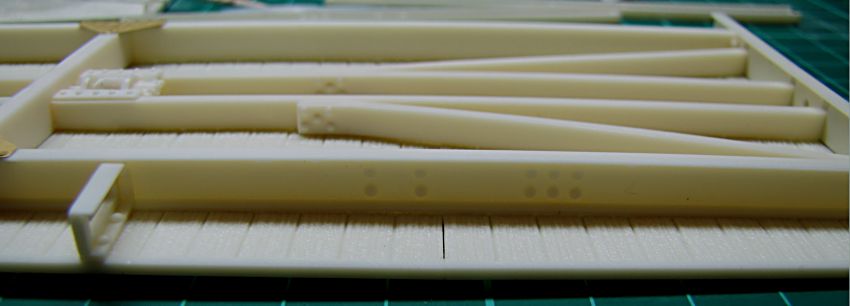
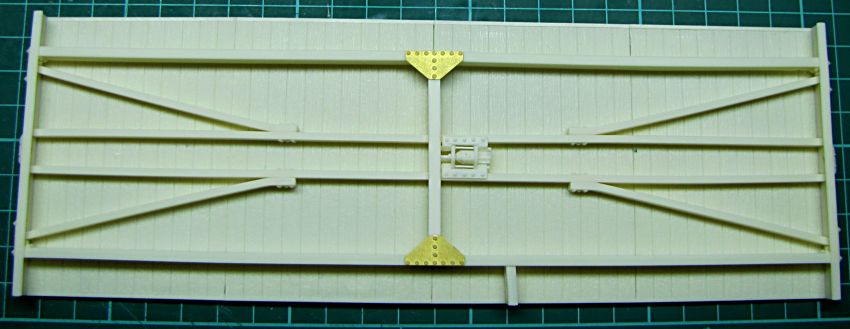
Continued with the chassis, sliders for bearing housings are assembled, and spring hangers then. Rivets on them corespond with rivets on side channel, what makes assembly very easy. Cross beams are to be fitted just like seen in pictures, they all are mounted on PE reinforcements. Wheels with axles and bearing housings dropped in place then with springs to check dry fitting. These will be glued in my next step and all secured with brackets. Lettering - cast firm name of Czech well known industry manufacturer - is nicely reproduced in resin as well.







More next time
Cheers
Libor












